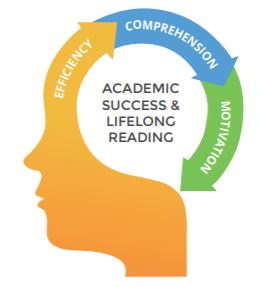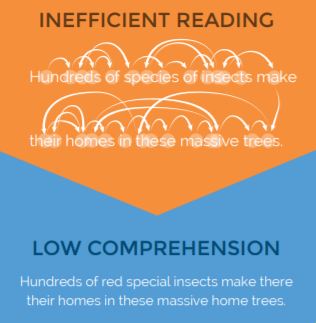Reading Efficiency, The Hidden Hurdle (Part 1)
What Is It?
Reading efficiency is a critical component of reading proficiency. An efficient reading process is fluent and feels easy and comfortable. Efficient readers can read for extended periods of time with good comprehension because they expend little energy on the mechanics of reading. Mental resources are focused on making meaning from text.
Why is it important?
Students who experience reading as inefficient, laborious, and unproductive typically avoid reading whenever possible and may lack the motivation to engage with text and ideas that would help them develop as readers and learners.
Reading involves physical and cognitive processes. First, the reader’s eyes must navigate across lines of text in a coordinated and sequential fashion to recognize words and phrases. Next, the reader’s vocabulary and comprehension skills work in tandem to connect ideas and create meaning. A fluent reader’s visual and perceptual skills are efficient, enabling the reader to focus attention on constructing meaning.2 In contrast, an inefficient, or disfluent, reader’s visual navigation of text is awkward and labored, and attention is diverted from the critical step of information processing and understanding.
Reading Science
Most students develop the ability to decode individual words. However, many students struggle to make the transition from decoding individual words to successfully reading connected text. A student experiences this difficulty if he or she has not yet developed the necessary visual, perceptual, and cognitive skills.
Next week we will provide information on some key visual and perceptual competencies that facilitate this transition and lead to efficient independent silent reading.


